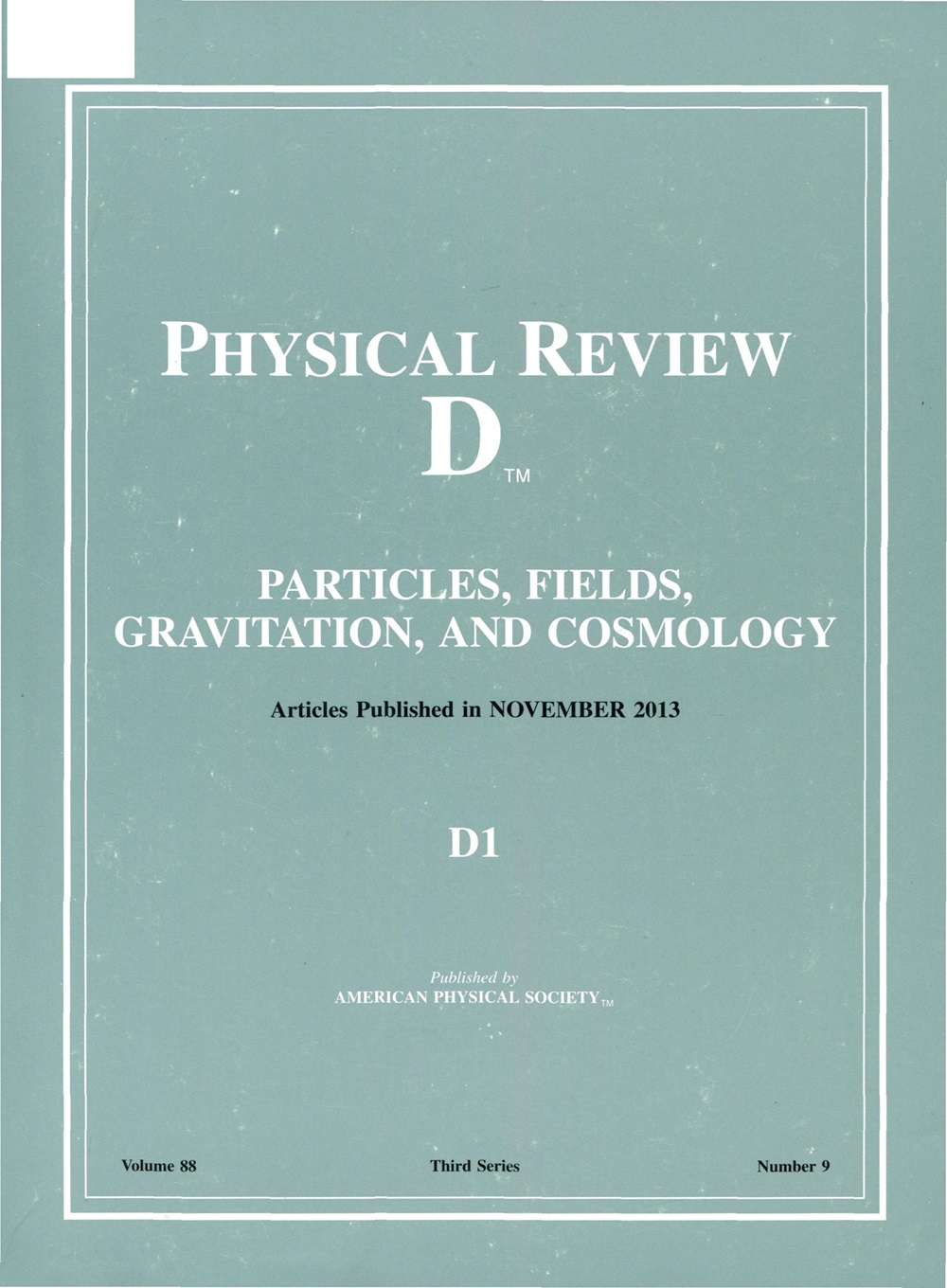Effective Lagrangian for strong and electromagnetic interactions of high-spin resonances
IF 5.3
2区 物理与天体物理
Q1 Physics and Astronomy
引用次数: 0
Abstract
Recent experiments of photon-nucleon and meson-nucleon scatterings have accumulated a lot of data for various meson production processes. One of the purposes of those experiments is to search for the missing resonances which were not discovered until now but whose existence was predicted by hadron models. The analyses of the data requires the development of dynamical coupled-channel models. Since several missing resonances are expected to have spin higher than 3/2, we need to include higher-spin resonances in dynamical coupled-channel models, which enable us to determine the couplings of effective Lagrangians of higher-spin baryons with pseudoscalar mesons or vector mesons. However, hadron models, such as quark models, give predictions only of the decay amplitudes of such baryons. Here we demonstrate the formalism of high-spin resonances and construct the relation between the coupling constants of effective Lagrangians and the partial decay widths that can be predicted by hadron models. This allows us to compare the coupling constants to the hadron model predictions not only in magnitude but in sign as well.高自旋共振强相互作用和电磁相互作用的有效拉格朗日量
近年来的光子-核子和介子-核子散射实验为各种介子产生过程积累了大量的数据。这些实验的目的之一是寻找直到现在还没有发现的,但它的存在是由强子模型预测的缺失共振。数据的分析需要建立动态耦合通道模型。由于一些缺失的共振预计自旋高于3/2,我们需要在动态耦合通道模型中包括高自旋共振,这使我们能够确定高自旋重子与伪标量介子或矢量介子的有效拉格朗日量的耦合。然而,强子模型,如夸克模型,只能预测这些重子的衰减幅度。本文证明了高自旋共振的形式化,并构造了有效拉格朗日的耦合常数与可由强子模型预测的部分衰变宽度之间的关系。这使我们不仅可以在量级上,而且可以在符号上比较耦合常数与强子模型的预测。2025年由美国物理学会出版
本文章由计算机程序翻译,如有差异,请以英文原文为准。
求助全文
约1分钟内获得全文
求助全文
来源期刊

Physical Review D
物理-天文与天体物理
CiteScore
9.20
自引率
36.00%
发文量
0
审稿时长
2 months
期刊介绍:
Physical Review D (PRD) is a leading journal in elementary particle physics, field theory, gravitation, and cosmology and is one of the top-cited journals in high-energy physics.
PRD covers experimental and theoretical results in all aspects of particle physics, field theory, gravitation and cosmology, including:
Particle physics experiments,
Electroweak interactions,
Strong interactions,
Lattice field theories, lattice QCD,
Beyond the standard model physics,
Phenomenological aspects of field theory, general methods,
Gravity, cosmology, cosmic rays,
Astrophysics and astroparticle physics,
General relativity,
Formal aspects of field theory, field theory in curved space,
String theory, quantum gravity, gauge/gravity duality.
 求助内容:
求助内容: 应助结果提醒方式:
应助结果提醒方式:


